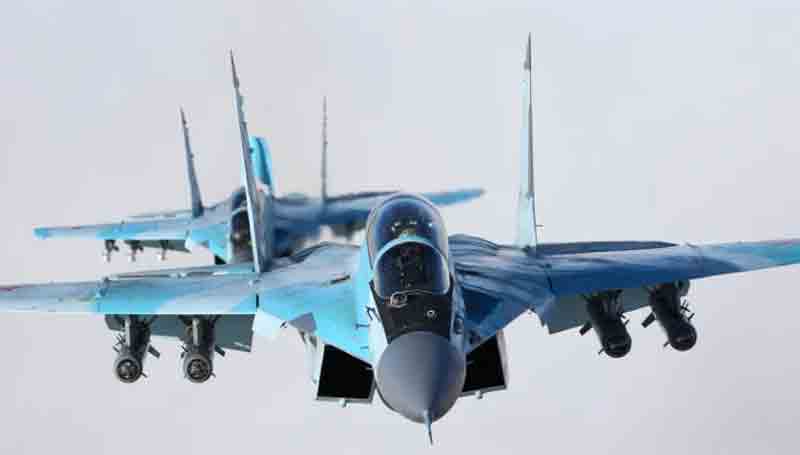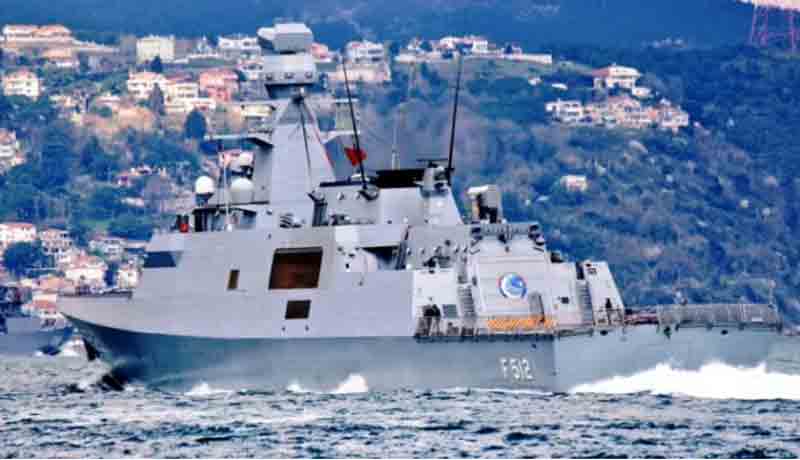The MiG-35 ‘Fulcrum Foxtrot,’ a significantly enhanced multirole fighter based on the renowned MiG-29 design, has reportedly finished its final qualification tests with Russian defense officials, signaling a possible shift in the aircraft’s prolonged path toward active service.
Designed to serve as a link between older fourth-generation fighters and Russia‘s more sophisticated fifth-generation technologies, the MiG-35 has been subjected to real-world combat assessments, including its use in the ongoing conflict in Ukraine, indicating its readiness to move from prototype status to mass production. Insiders from the Russian aerospace industry have confirmed that the aircraft’s development program is still in progress, with the state-owned United Aircraft Corporation (UAC) continuing test flights and field operations as part of a larger initiative to confirm the MiG-35’s effectiveness in combat scenarios.
Previous reports indicate that UAC has officially signaled its preparedness to start production and meet potential orders from the Russian government, bolstering expectations that the MiG-35 will soon be integrated into the Russian Aerospace Forces. In a statement made last year, UAC CEO Yuri Slyusar emphasized that full-scale production of the MiG-35—designated as a 4+++ generation fighter—would commence shortly, in light of the increasing operational needs of the Russian Air Force amid escalating regional and global tensions.
This announcement underscores the growing concern within Moscow’s defense circles that, should a high-intensity conflict arise with NATO forces led by the United States, Russia may lack adequate fighter aircraft to maintain air superiority across various conflict zones. The significant losses incurred during the war in Ukraine—where open-source intelligence and Western assessments indicate that Russia has suffered a considerable number of aircraft losses—have intensified the urgency to rapidly rebuild and modernize the nation’s combat aviation capabilities.
Russian defense strategists regard the MiG-35 as more than just a temporary solution; they see it as a valuable asset that can enhance frontline units while the fifth-generation Su-57 ‘Felon’ is still in limited supply and the Su-75 ‘Checkmate’ is years away from being fully operational. In light of increasing concerns about tensions along NATO’s eastern border, Russia seems to be hastening its efforts to restore its airpower capabilities, with the MiG-35 positioned as a key option to address the shortfall caused by combat losses and delays in stealth fighter production.
Recent reports indicate that the MiG-35 has already been deployed in combat operations over Ukraine, a development analysts interpret as both a revival of the previously sidelined fighter and a practical showcase of its upgraded avionics, weaponry, and survivability features. Russian state media RIA Novosti quoted Sergey Korotkov, Chief Designer at United Aircraft Corporation, confirming the MiG-35’s involvement in combat, which adds weight to the speculation that the aircraft is nearing formal operational status. He mentioned that ‘Further extended flight tests will be conducted before the Russian Ministry of Defence makes its final decision on the matter,’ highlighting the thorough evaluation process necessary before serial production can be approved.
Korotkov also noted that the MiG-35 meets the requirements set by international customers, reflecting UAC’s ongoing efforts to promote the aircraft to foreign buyers seeking affordable multirole options.
This statement underscores the notion that the deployment of the MiG-35 in Ukraine is more about demonstrating its combat readiness to potential international buyers than fulfilling strategic needs. Currently, the Russian Aerospace Forces operate six MiG-35 units, which are mainly used for developmental testing, system evaluations, and pilot training in controlled environments.
The United Aircraft Corporation has been actively pursuing exports, focusing on current MiG-29 operators like the Indian Air Force and the Royal Malaysian Air Force—both of which have older Fulcrum fleets—but these initiatives have not yet resulted in any export contracts.
In a prior diplomatic gesture, Russian President Vladimir Putin extended an offer of the MiG-35 to former Malaysian Prime Minister Tun Dr Mahathir Mohamad during a significant bilateral meeting, reflecting Moscow’s interest in Southeast Asian defense markets. Despite extensive marketing efforts, the aircraft has had difficulty attracting foreign buyers, with experts suggesting that the lackluster interest is due to competition from advanced Western fourth-plus generation fighters such as the F-16V, JAS-39 Gripen E, and Dassault Rafale.
Nonetheless, Russian defense analysts continue to promote the MiG-35’s technical adaptability, emphasizing that its open architecture allows for the seamless integration of next-generation avionics, precision munitions, and data link systems from various suppliers. In contrast to older MiG-29 models, the MiG-35 is equipped with a cutting-edge “ZHUK-AM” Active Electronically Scanned Array (AESA) radar, enhancing its capabilities to rival advanced Western aircraft like the Eurofighter Typhoon and F/A-18E/F Super Hornet. “The quicker an enemy aircraft is detected—especially with advanced radar systems—the sooner it can be neutralized.”
Russian defense analysts report that the ZHUK-AM radar can detect targets at distances of up to 220 kilometers, with the capability to identify stealth aircraft like the F-22 Raptor at ranges of approximately 80 kilometers under specific radar cross-section conditions. The MiG-35 is equipped with two Klimov RD-33K afterburning turbofan engines, achieving a maximum speed of Mach 2.25 and a service ceiling of 67,000 feet, which aligns its performance with that of most fourth-generation Western fighters. It features a 30mm GSh-30-1 autocannon and can carry up to 6.5 tonnes of munitions across nine hardpoints, designed for a wide range of precision strikes in multi-domain operations.
Its versatility allows it to deploy various air-to-air, air-to-ground, anti-ship, and anti-radiation missiles, facilitating air superiority, ground interdiction, maritime strike, and suppression of enemy air defenses (SEAD) missions with tactical adaptability. Among its air-to-air weapons are the short-range R-73 (AA-11 Archer) known for its high off-boresight maneuverability, and the R-77 (AA-12 Adder), which is Russia’s main beyond-visual-range (BVR) missile featuring active radar homing.
The MiG-35 also carries the longer-range R-27 series, available in both radar and infrared-guided versions, providing BVR engagement capabilities against high-value aerial targets. For ground attack missions, it can utilize Kh-29T/L (TV and laser-guided missiles) and Kh-25ML/MPU for tactical and anti-radiation strikes, ensuring operational flexibility against both stationary and moving targets.
Its maritime strike capabilities are enhanced by the Kh-31A, a supersonic anti-ship missile designed to breach layered naval air defenses, while SEAD missions are supported by the Kh-31P, a Mach 3.5 anti-radar missile optimized to counter advanced systems like the MIM-104 Patriot and S-300.
The MiG-35, equipped with precision-guided munitions like the KAB-500 and KAB-1500—operating through laser guidance or GLONASS satellite—broadens its capabilities for land strikes, while traditional unguided rockets such as the S-8, S-13, and S-25 continue to support close air operations. Its defensive capabilities are bolstered by an integrated Electronic Warfare pod, sophisticated radar warning systems, and infrared search and track (IRST) technology that facilitate passive detection and tracking of targets.
In summary, the MiG-35 is positioning itself as Russia’s practical solution to immediate airpower deficiencies, providing a flexible, resilient, and export-capable platform aimed at ensuring combat effectiveness in a high-threat, multi-theatre conflict scenario.
The outcome of Moscow’s investment in the MiG-35, in terms of ongoing domestic use and international interest, is yet to be determined; however, as the world prepares for potential high-intensity conflicts, the Fulcrum Foxtrot could very well regain its significance in Russia’s future air warfare strategy.
Discover more from Defence Talks | Defense News Hub, Military Updates, Security Insights
Subscribe to get the latest posts sent to your email.





